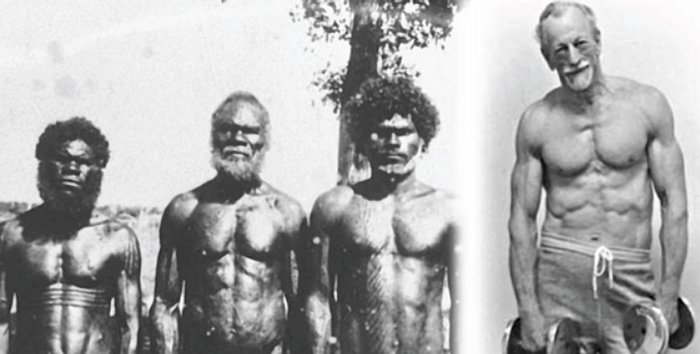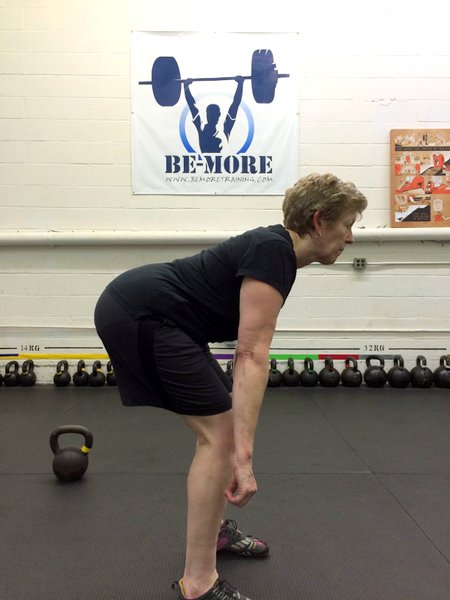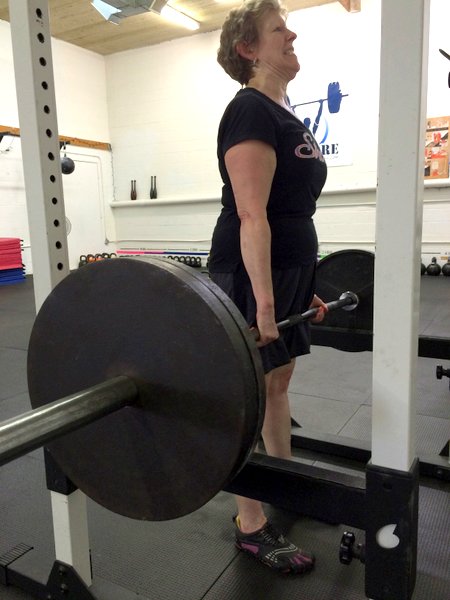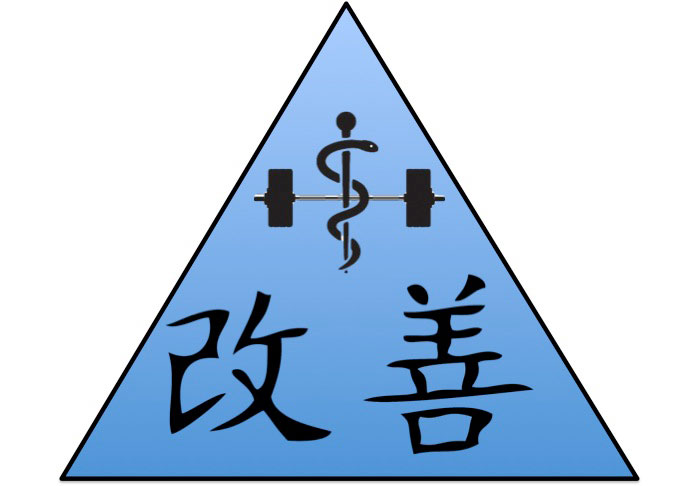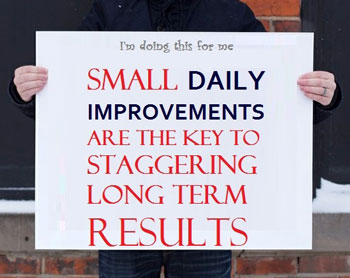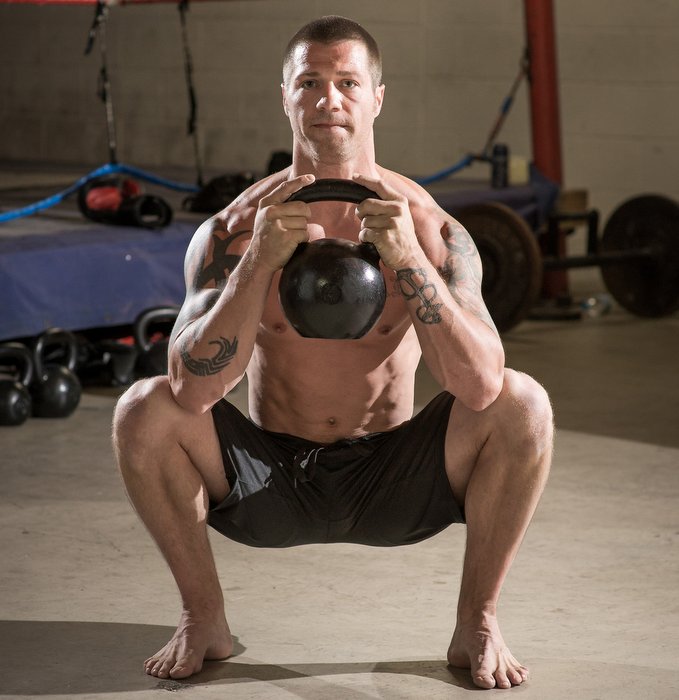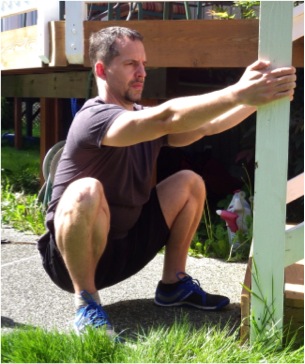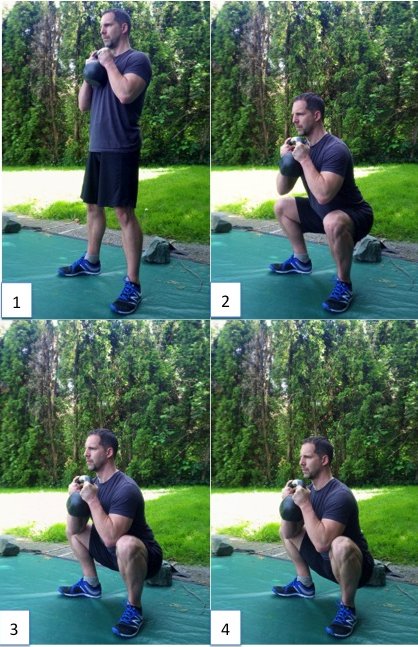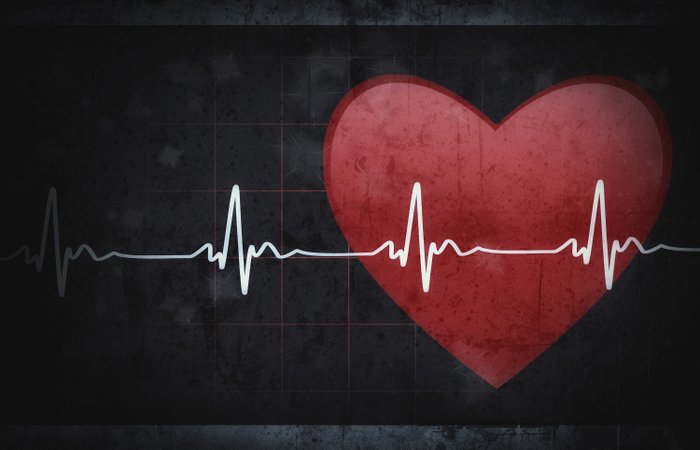
During the 1990s, I had the great fortune to become an aerobic disciple of Dr. Leonard Schwartz, medical doctor, psychiatrist and exercise genius. Len was in his sixties when we met. His “mission” was to devise a new fitness exercise system, one that suited his personality and psychology, one capable of transforming the human body in new and unique ways. Len came onto the scene in the 1980s and found the state of exercise and fitness sadly lacking; the bodybuilder/weight trainer contingent ignored cardio considerations while the joggers, distance runners and Jane Fonda exercise class types ignored any and all strength considerations. Len wanted both and decided to devise a system that would inject a purposeful element of strength into a decidedly cardio format. He called his endurance/strength approach “long strength,” which he described as the ability to perform light to moderate muscular exertions over extended periods of time: muscular contractions of various intensities were placed into an aerobic format.
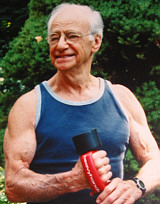
With one foot in the cardio camp and another in the muscle and strength camp, Len sought to devise a fitness training system that paid homage to both. Len wanted his cardio/strength regimen to utilize all of the limbs—not just legs—to generate the totality of the effort. Using Sherlock Holmes-like powers of logic and deductive reasoning, Len reverse-engineered an entire fitness system within his massive brain. Len took his philosophic musings to the University of Pittsburgh’s Sports Performance Laboratory where he put theory into practice. Len approached fitness with no preconceptions: he would go wherever his research results took him. Len found conventional fitness thinking dogmatic, overly commercialized and one-dimensional; he filled a vacuum with his outside-the-box thinking.
I interviewed him repeatedly for cutting-edge articles about aerobics for use in bodybuilding when I was the lead training writer at Muscle & Fitness magazine. We talked for many years and I repeatedly quizzed the hell out of Len on all things cardio, medical, scientific and what we collectively called “brain-train”. We talked at length about the optimal psychological mindset for sports and training. He and I would talk several times a week and did so for years. I quizzed him mercilessly about his approach; he loved talking with someone that “got it.” We talked as two theoretical scientists would, and his ideas were so scientifically grounded that they blew everything else out of the water from an exercise/philosophic standpoint. His reasoning and science were irrefutable—and his conclusions and solutions were unique. In response to his experimentation, he devised a new method of exercise and training.
Len was a fascinating dude. In addition to being a top-flight psychiatrist, he wrote poetry, played classical guitar extremely well and sculpted. He lived in a beautiful old section of Pittsburgh, right across the street from Steeler’s owner Art Rooney. When Len turned his undivided attention towards “fitness,” his conclusions proved to be as as unique as the man. He began with a stated goal, to remake and rebuild the human body—starting with his. He sought to create a healthy, functional body: lean and fat-free, yet strong, flexible, capable and athletic. He sought to create the optimal body. To build the optimal body he saw in his mind’s eye, Len needed a system that built both endurance and strength.
Len felt the ideal body should be lean and muscled—but lightly muscled—like Michelangelo’s David. I argued the ideal male should look like the thickly muscled Farnese Hercules. I championed a heavier, thicker, more powerful man, a rhino to Len’s gazelle. “The Farnese Hercules would kick David’s ass!” I would taunt him. “That presupposes Herc could catch David before gassing out.” Len would counter. Touché Len! He was a physician, a healer, a mentor and a life coach. Philosophical by nature, he would muse and debate with me about “the ultimate goal of fitness.” He wanted a fit and muscled body—but had qualified this with the provision, “a lightly muscled body.” I was a big-muscle guy from M&F magazine and a “short strength expert,” as he labeled my 800-pound squat ability. He was the master of “long strength” and by dubbing me as a master of “short strength” we had lots to talk about. He wanted to know all about our pure power methods and I wanted to understand this “power cardio” approach which was at odds with the super popular steady-state, low intensity, leg-only cardio modes and methods so prevalent back then (and now).
His cardio/strength feats were incredible. At age 70, he could pump a pair of ten-pound hand weights to forehead height (on every rep) for a solid hour—while power walking and squatting every ten paces. Small at 145 pounds, Len possessed a 3% walking around body-fat percentile—despite eating like a starved prisoner let loose at a buffet. His long strength cardio training built his metabolism into a blast furnace and he was the best possible example of the benefits of his “HeavyHands” system.
His light bulb moment came when he was comparing all-time best athletic VO2 max readings. He could not help but notice how far ahead the cross-country skiers were from the rest of the pack. What differentiated the skiers from the runners? The skiers used their arms; they pumped hard and exerted mightily with their arms using their ski poles as they propelled forward on every stride stroke. The cross-country skier will use legs and arms for propulsion and often amp up the effort with a dramatic folding forward at the waist—further increasing the degree of difficulty. The sport creates the physique of the athlete and to a man, the elite cross-country skiers have off-the-chart aerobic capacities and lean, muscled-up physiques. Len pondered the possibility of creating a fitness protocol that replicated results achieved by cross-country skiing—but without skiing.
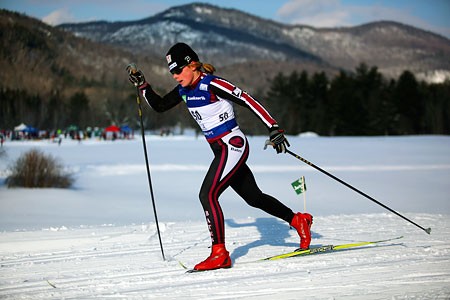
He needed a tool that could load the arms, like the arms of a cross-country skier. He needed a tool would enable quad-limb cardio. Len wanted the totality of aerobic effort spread, semi-equally across all four limbs. At the end of a Len-protocol training session, all four limbs, arms and legs, will have performed the same amount of work. During the total training time in his cardio session, each limb will receive approximately 25% of the session allotment. The vast majority of aerobic machines and devices only use the legs—two limbs—to generate 100% of the aerobic effort. By distributing the cardio effort and working all four limbs, the body benefits to a far greater degree on a multitude of levels. “Leg only” cardio was and is decidedly and demonstrably inferior to quad-limbed cardio. Yet, virtually every aerobic format used (and uses) the legs, exclusively, to generate 100% of the cardio effort.
For Len, the goal was to create a new type of training that would create a new archetypical physique: lean and light, yet muscular and strong. His “ideal human” would be light in bodyweight, yet extremely fit, they would possess incredible endurance and have shapely, functional muscles chock full of mitochondria. Tight adherence to the embryonic “Heavy Hands” tools and protocols transformed Len’s own physique to a dramatic degree and extremely quickly. He was his own test lab and achieved incredible results even though he began at the advanced age of 54.
Len “loaded” his hands; he made them “heavy.” Once he made his hands heavy, he began creating drills by improvising and experimenting with different training modalities and ideas. He checked his results with blood work and the VO2 scientific monitoring he used at the Pitt Sports Lab. He was testing his theories with his new type of training and logging actual results. Could he replicate the VO2 Max readings generated by the Finnish, Norwegian and Russian cross-country skiers without skiing? Could he create a new fitness system that used all four limbs and built strength and endurance?
Len sought a system in which both cardio inefficiency and cardio efficiency could coexist. Efficient steady-state cardio, had its place as a valid tactic in Len’s HeavyHands arsenal; but so did purposefully inefficient, burst or interval cardio, with its extreme demands on the body. Len wanted to create a system that would allow the athlete to effortlessly modulate the degree and type of aerobic intensity using an arsenal of variables. He created “intensity enhancers” that included how high the weighted hands were raised on each stride-step; Len could modulate the pace of the exercise, he could alter the type and kind of movement pattern selected. The effects of each exercise would change when paired with heavier or lighter poundage. The tweaking, modulation and intensity amping possibilities were virtually limitless.
Len’s magus opus was his seminal book, HeavyHands, which is still available on Amazon and still worthy of a read. In his book, he explains the science behind HH. He talks about METs and mitochondrial density; he lays out exacting techniques and shares precise protocols. HeavyHands, at its popular peak, was available in every major sporting goods store in every mall in the county. Women’s aerobic dance classes, the biggest fitness craze in the history of fitness, began using HeavyHands. Sales shot through the roof.
Unfortunately, HeavyHands died. Sales plummeted when it became unfairly categorized as just another bad 80s fad, like parachute pants, head bands, the Miami Vice look, Cabbage Patch Dolls, Pintos and pet rocks. HeavyHands got washed out to sea, considered faddish, ineffectual and passé.
Old Wine in New Bottles; the Son of HeavyHands
HeavyHands went from pop fad to premature death. There were a lot of reasons for its demise, but first and foremost, HeavyHands never caught on with the male population. I was Len’s true friend, but there was no way I would perform any of his dance routine protocols. If you look at commercial cardio protocols, the cardio system most successful in enticing males to participate was Billy Blanks’s Tae Bo. Men flocked to Tae Bo classes to take part in the martial art katas; the punches and kicks. The clenched fists and exertion grunts made Tae Bo a cardio dance class acceptable for men. Plus, Billy was a real man; his Alpha credentials were beyond reproach. The martial core of Tae Bo made it hip for guys to perform. True men could now go to cardio class, heads held high.
Not so with HeavyHands. Group HeavyHands classes were more akin to the cardio dance class format. Real men were not going to be involved in anything vaguely resembling a Jane Fonda/Richard Simmons style aerobic dance class. Unfortunately, HeavyHands group protocols definitely resembled dance class cardio, so men opted out. Ironically, in the 1990s a new cardio tool emerged that captured the hearts and minds of alpha male worldwide: the kettlebell. Isn’t the kettlebell yet another way to load the hands and make them “heavier”? Indeed, classical and current kettlebell protocols favor heavier payloads and shorter durations; still I maintain the gruesome orb, the kettlebell, is the only begotten son of HeavyHands.
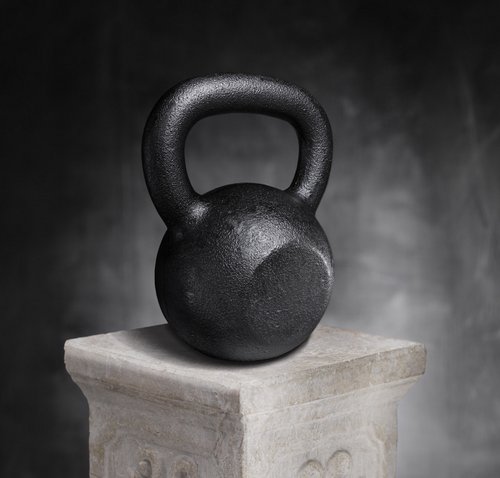
Most kettlebell experts would balk at the iron orb being labeled as an “aerobic” tool. Yet, when it comes to creating the deepest possible cardio inroad, creating strength/endurance, and adhering to “long strength” philosophies, the kettlebell—properly used—sets the Gold Standard. The unwieldy device can create the optimal cardio effect: a perfect balance can be struck between pure endurance and sustained strength. A kettlebell, in the hands of a true expert, is the optimal tool for inducing the deepest possible cardio inroad and triggering the maximal adaptive response.
The final deathblow for HeavyHands occurred when the public ignored Len’s protocols. It was critically important that the little hand weights, regardless the poundage, be raised to predetermined heights: low, medium or high. The height selected was used to create the cardio intensity needed to achieve the desired training effect. The public turned HeavyHands into “CarryHands”. The red-handled dumbbells were seen everywhere, yet despite their popularity, no one got the promised gains. The lack of results was directly attributable to the total disregard of Len’s protocols: instead of pumping the arms to any height, the public speed-walked or jogged with HHs, carrying them like heavy suitcases at the end of a long trip or clutched to the chest of the jogger/runner in a death-grip.
The “CarryHands” protocol actually reduced arm motion and diminished results. Now, the immobile and frozen arms actually contributed less then if walker/jogger was empty handed, swinging their un-weighted arms normally. Naturally, no one got results from “CarryHands” and it killed HeavyHands.
In 2015, we’re resurrecting Len’s “old wine” theories, strategies and protocols. The first order of business was to select a new tool. We found a retro tool, the Fan Bike, that allowed us to invoke Schwartz’s strategies in a manner and fashion that could equal or exceed results derived from HeavyHands or kettlebells. The retro Fan Bike allows the user to tax both arms and legs in two directions: forward and backward. We place old wine (Schwartz’s philosophies and protocols) into a new bottle (a modern retro tool that enables us to maximally tax ourselves to the desired degree.) The end result is an exciting new avenue of progress for the informed and enlightened fitness seeker.
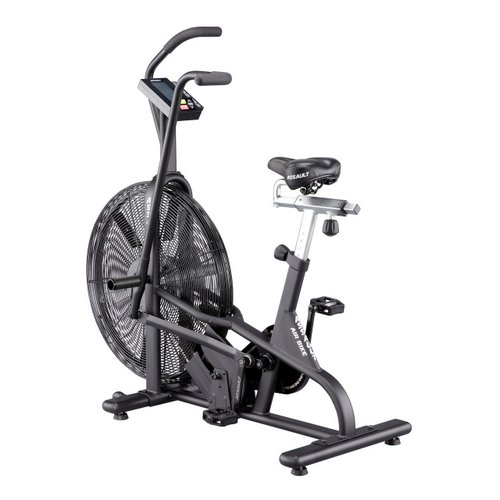
End of Part I
Editor’s comment:
After many discussions, Marty and I decided that the Fan Bike would be our tool of choice for our “cardio” protocols. It meets the requirement for capability of delivering high intensity workouts involving all four limbs, but also allows those with orthopedic limitations/conditions to fully participate in the protocols. In Part II, Marty will outline an excellent protocol for metabolic conditioning using the Fan Bike. I will follow up in Part III delving into some of the foundational science supporting high intensity 4-limb cardio for health and performance, as well as specific benefits found exclusively with the Fan Bike.
***
Marty Gallagher is the author of Strong Medicine, The Purposeful Primitive and Coan: The Man, The Myth, The Method. Gallagher coached the United States team that won the IPF powerlifting world team title in 1991. He is a 6-time national masters champion and national record holder. He was the IFF world master powerlifting champion in 1992. He currently works with elite athletes, spec ops military and governmental agencies.
